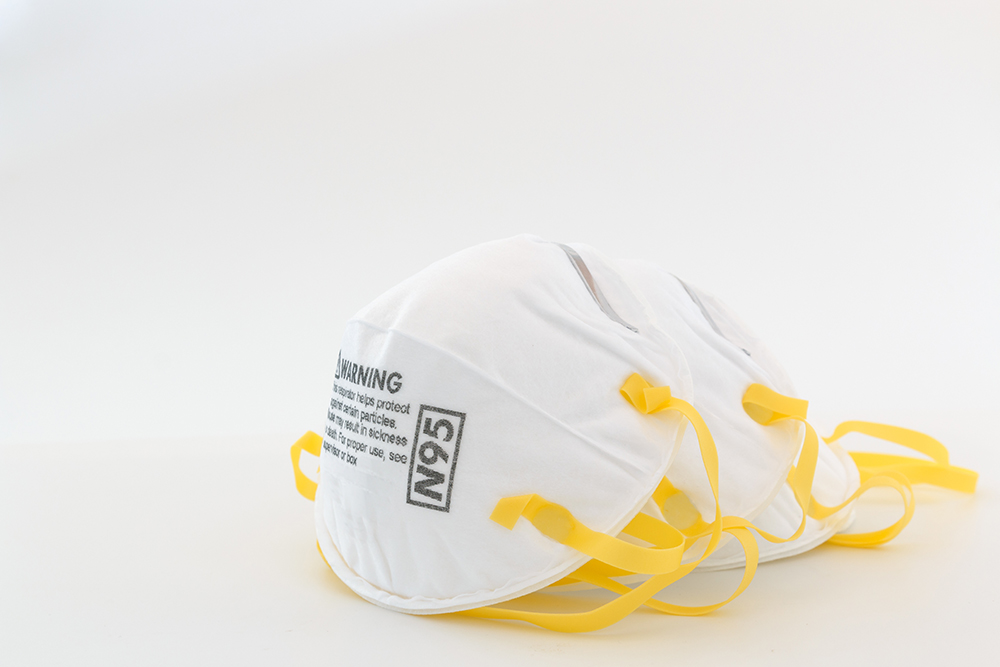
Scarcity of key material squeezes U.S. medical mask manufacturers
September 10, 2020
By
The Associated Press
Shortages in N95 respirators and other PPE remain an issue

Early in the pandemic the White House failed to heed stark warnings — specifically about N95s — from high-level administration officials. (chaphot/Adobe Stock)
By Martha Mendoza, Juliet Linderman, Thomas Peipert and Irena Hwang
FRESNO, Calif. — Rachel Spray is still grieving the loss of her fellow nurse who died after being exposed to the novel coronavirus at Kaiser Permanente Fresno Medical Center. Now, as she stands in front of the gleaming glass and concrete hospital, she says she “dreads going in there” and fears she’ll be next.
That’s because like those in many U.S. hospitals, management is rationing supplies, she says, keeping medical-grade masks under lock and key.
White House officials say U.S. hospitals have all the medical supplies needed to battle the deadly virus, but frontline health care workers, hospital officials and even the Food and Drug Administration say shortages persist. Critical shortfalls of medical N95 respirators — commonly referred to as N95 masks — and other protective gear started in March, when the pandemic hit New York.
Supply chain pressures continue
Pressure on the medical supply chain continues today, and in “many ways things have only gotten worse,” the American Medical Association’s president, Dr. Susan Bailey, said in a recent statement.
“N95s are still in a shortage,” said Mike Schiller, the American Hospital Association’s senior director for supply chains. “It’s certainly not anywhere near pre-COVID levels.”
Advertisement
Early in the pandemic the White House failed to heed stark warnings — specifically about N95s — from high-level administration officials.
The Associated Press has found the administration took months to sign contracts with companies that make the crucial component inside these masks: meltblown textile. Meltblowing is the manufacturing process that turns plastic into the dense mesh that makes N95 masks effective at blocking vanishingly small particles, including viruses.
Even today, manufacturers say the Trump administration hasn’t made the long-term investments they need in order to ramp up to full capacity. Meanwhile, the administration allowed meltblown exports to slip out of the country as the pandemic, and the demand for masks, soared.
Manufacturers say they risk significant losses if they invest millions in machinery, raw materials, new employees and factory space to churn out a product projected to have a short-lived demand, without assurances that the government will continue to buy their meltblown textile after the need for N95s recedes post-pandemic.
“I’m not going to sit here and tell you that we’re going to guarantee purchases in 2021 or whatever date you pick,” said Rear Adm. John Polowczyk, who heads the Federal Emergency Management Agency’s Supply Chain Stabilization Task Force. He denies there are shortages.
Meltblown textiles are used in everything from diapers to air conditioners. Electrostatically charging meltblown gives it the ability to capture particles too tiny to be filtered by regular masks.
A study published this summer in the medical journal The Lancet found that frontline workers without N95 masks who cared for COVID-19 patients have the highest risk of infection.
“The initial lack of personal protective equipment in nursing homes, and lack of infection control practices in general, contributed to a general community spread across the country,” said Harvard Medical School’s Dr. Andrew T. Chan, one of the authors.
But that personal protective equipment just wasn’t available early in the pandemic when demand for the disposable masks and gowns exploded. And it still isn’t.
Shifting estimates on usage
Before COVID-19, the disease caused by the novel coronavirus, the government estimated that the U.S. would need more than 5 billion N95 respirators per year in a pandemic. In March, the Department of Health and Human Services said the demand would be about 3.5 billion.
Those estimates were based on N95 manufacturer recommendations and hospital best practices that dictated health care workers use one mask per patient visit, so a single nurse could go through perhaps a dozen a day. But due to shortages, the Centers for Disease Control and Prevention instructed health care providers to reuse them.
Because of this shift in usage, it’s hard to accurately estimate the severity of the shortages of medical-grade masks and gowns.
But today, hospital administrators — some of whom are facing new state orders to stockpile supplies — say they can’t get as many masks as they want, and the FDA included N95s on its most recent medical supply shortage list.
In Fresno, nurse Rachel Spray typically gets one N95 per shift.
Kaiser spokesman Marc Brown didn’t dispute this claim, but said the change in the way masks are used still allows the clinical staff to safely care for patients. The hospital is just carefully managing supplies, he said.
“We continue to prudently manage PPE supplies to ensure they are readily available to protect our health care workforce for the duration of this pandemic,” he said.
White House trade adviser Peter Navarro disputes reports of shortages. In an August interview, he said his office responds daily to news stories of ill-equipped medical providers, sending supplies as needed.
“We have what we need to get to people what they need,” he said.
Linderman reported from Washington, Peipert from Denver and Hwang from Atlanta.